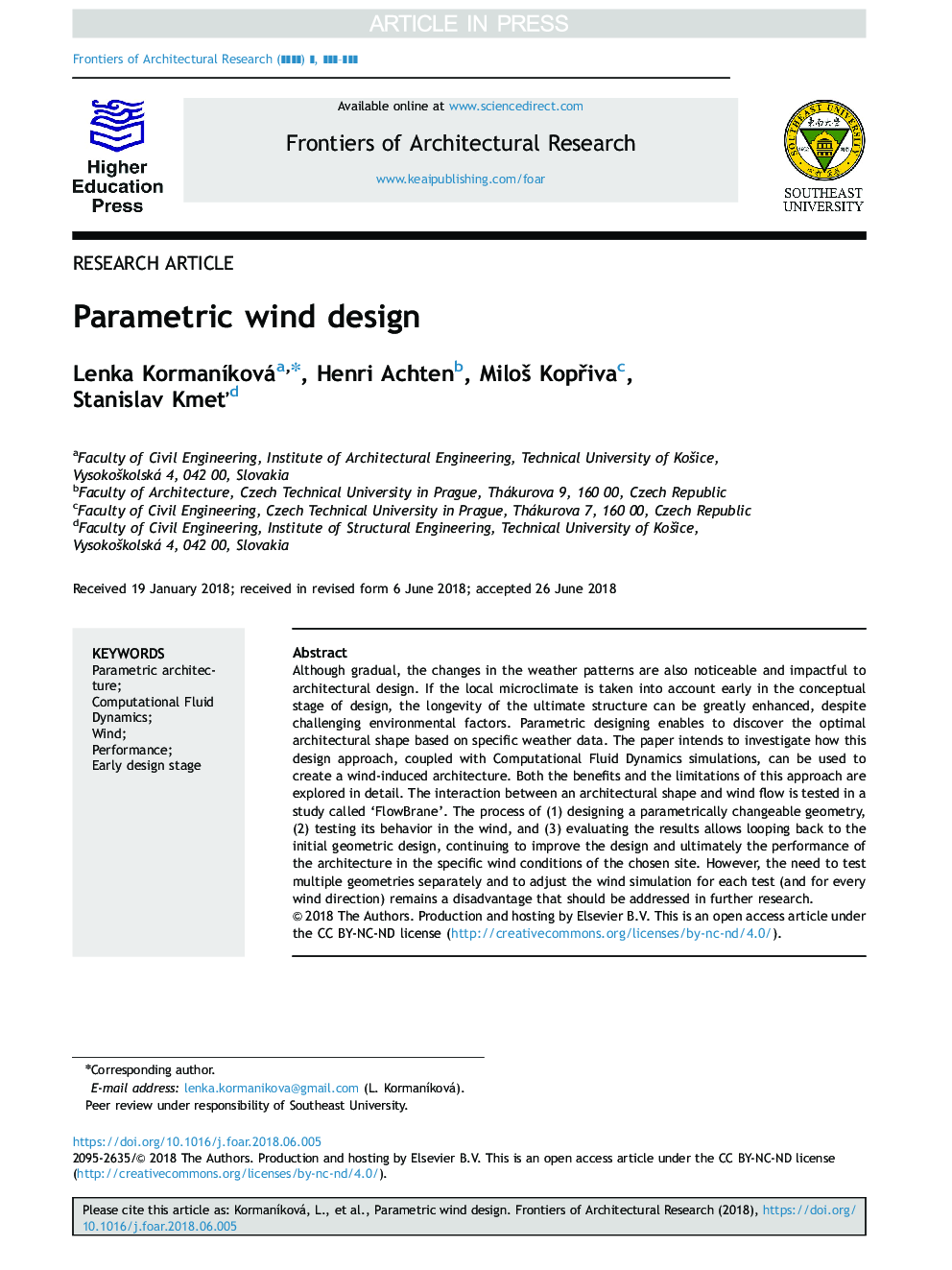| Article ID | Journal | Published Year | Pages | File Type |
|---|---|---|---|---|
| 11021299 | Frontiers of Architectural Research | 2018 | 12 Pages |
Abstract
Although gradual, the changes in the weather patterns are also noticeable and impactful to architectural design. If the local microclimate is taken into account early in the conceptual stage of design, the longevity of the ultimate structure can be greatly enhanced, despite challenging environmental factors. Parametric designing enables to discover the optimal architectural shape based on specific weather data. The paper intends to investigate how this design approach, coupled with Computational Fluid Dynamics simulations, can be used to create a wind-induced architecture. Both the benefits and the limitations of this approach are explored in detail. The interaction between an architectural shape and wind flow is tested in a study called 'FlowBrane'. The process of (1) designing a parametrically changeable geometry, (2) testing its behavior in the wind, and (3) evaluating the results allows looping back to the initial geometric design, continuing to improve the design and ultimately the performance of the architecture in the specific wind conditions of the chosen site. However, the need to test multiple geometries separately and to adjust the wind simulation for each test (and for every wind direction) remains a disadvantage that should be addressed in further research.
Related Topics
Physical Sciences and Engineering
Energy
Renewable Energy, Sustainability and the Environment
Authors
Lenka KormanÃková, Henri Achten, MiloÅ¡ KopÅiva, Stanislav KmeÅ¥,
